الكومنولث الپولندي-اللتواني
مملكة پولندا ودوقية لتوانيا العظمى[a] | |||||||||||||||
|---|---|---|---|---|---|---|---|---|---|---|---|---|---|---|---|
| 1569–1795 | |||||||||||||||
Motto: لاتينية: Si Deus Nobiscum quis contra nos (If God is with us, then who is against us) Pro Fide, Lege et Rege (Latin: For Faith, Law and King, since 18th century) | |||||||||||||||
 موقع الكومنولث الپولندي-اللتواني | |||||||||||||||
| المكانة | اتحاد دولة | ||||||||||||||
| العاصمة | الكومنولث تاج المملكة الپولندية: كراكاو، وارسو ح. 1600; دوقية لتوانيا العظمى: Vilnius[b] | ||||||||||||||
| اللغات الشائعة | |||||||||||||||
| الدين |
| ||||||||||||||
| الحكومة | ملكية وراثية (1569–1573) ملكية انتخابية (1573–1791 / 1792–1795) ملكية دستورية (1791–1792) | ||||||||||||||
| الملك والدوق الأعظم | |||||||||||||||
• 1569–1572 | سيگيموند الثاني أغسطس | ||||||||||||||
• 1764–1795 | Stanisław II Augustus | ||||||||||||||
| التشريع | سيم | ||||||||||||||
• Privy Council | مجلس الشيوخ | ||||||||||||||
| التاريخ | |||||||||||||||
| 1 يوليو 1569 | |||||||||||||||
| 1768 | |||||||||||||||
| 5 أغسطس 1772 | |||||||||||||||
| 3 مايو 1791 | |||||||||||||||
| 23 يناير 1793 | |||||||||||||||
| 24 أكتوبر 1795 | |||||||||||||||
| Area | |||||||||||||||
| 1582 | 815،000 km2 (315،000 sq mi) | ||||||||||||||
| 1618 | 1،153،465 km2 (445،355 sq mi) | ||||||||||||||
| التعداد | |||||||||||||||
• 1582 | 6500000 | ||||||||||||||
• 1618 | 10500000 | ||||||||||||||
| |||||||||||||||
| Today part of | |||||||||||||||
الكومنولث الپولندي-اللتواني Polish–Lithuanian Commonwealth (أو الاتحاد، بعد 1791 كومنولث پولندا) كانت دولة ثنائية تتألف من پولندا ولتوانيا يحكمها عاهل مشترك. وكانت أكبر[1][2] وأحد الدول الأكثر تعداداً في اوروبا القرنين 16 و 17، بمساحة 400،000 ميل مربع (1،000،000 km2)[3] وسكان متعددي الأعراق بلغ تعدادهم 11 مليون نسمة في أقصى مستوى في مطلع القرن 17.[4] وقد تأسس في اتحاد لوبلن في يوليو 1569 واختفت كدولة مستقلة بعد التقسيم الثالث لبولندا في 1795.[5][6][7]
وتمتع الاتحاد بمزايا فريدة بين الدول المعاصرة. وتميز نظامه السياسي برقابة صارمة على السلطة الملكية. تمثلت هذه الرقابة في السيم الذي كان يديره طبقة النبلاء (الشلختا). وكان هذا المفهوم هو نشأة ما عرف فيما بعد بالمفاهيم المعاصرة مثل الديموقراطية،[8] الملكية الدستورية،[9][10][11] والفدرالية.[12] وكانت دولتا الكومنولث متكافئتان، إلا أن پولندا كانت هي الشريك المهمين في الاتحاد.[13]
وتميز الكومنولث الپولندي اللتواني بمستويات مرتفعة من التنوع العرقي وما ارتبط به من تسامح ديني، التي ضمنها قانون كونفدرالية وارسو 1573،[14][15][16] وبالرغم من ذلك، فقد اختلفت درة حرية الديانة بمرور الوقت.[17]
بعد عقود عدة من الرخاء،[18][19][20] دخلت في فترة تراجع سياسي[11][21] وعسكري واقتصادي طويل[22]. وقد أدى تزايد ضعفها إلى تقسيمها بين جيرانها الأقوى، النمسا، پروسيا والامبراطورية الروسية، في أواخر القرن 18. قبل فترة قصيرة من زواله، تبنى الكومنولث جهود إصلاح ضخمة وكتب دستور 3 مايو 1791 - أول دستور مكتوب في التاريخ الاوروپي المعاصر وثاني دستور مكتوب في تاريخ العالم المعاصر.[23][24][25][26][27]
الاسم
كان الاسم الرسمي للكومنولث مملكة پولندا ودوقية لتوانيا العظمى (پولندية: Królestwo Polskie i Wielkie Księstwo Litewskie, لتوانية: Lenkijos Karalystė ir Lietuvos Didžioji Kunigaikštystė, اوكرانية: [Королівство Польське та Вели́ке кня́зівство Лито́вське Korolivstvo Polśke ta Vełyke Kniazivstvo Łytovśke] Error: {{Lang}}: text has italic markup (help), بالبيلاروسية: [Каралеўства Польскае і Вялікае Княства Літоўскае Karalieŭstva Polskaje i Vialikaje Kniastva Litoŭskaje] Error: {{Lang}}: text has italic markup (help)). قبل القرن السابع عشر، كانت المعاهدات الدولية والنصوص الدبلوماسية تشير إليها بالاسم اللاتيني [Regnum Poloniae Magnusque Ducatus Lithuaniae] Error: {{Lang}}: text has italic markup (help). في القرن السابع عشر عادة ما كان يعرف باسم the Most Serene Republic of Poland (بالپولندية [Najjaśniejsza Rzeczpospolita Polska] Error: {{Lang}}: text has italic markup (help)، باللاتينية [Serenissima Res Publica Poloniae] Error: {{Lang}}: text has italic markup (help)).[28] وكان يطلق على سكانها اسم "Rzeczpospolita" ([Рѣч Посполита Rěč Pospolyta] Error: {{Lang-xx}}: text has italic markup (help), لتوانية: Žečpospolita). وكان الاوروپيون الغربيون يطلقون عليهم اسم پولندا، applying the pars pro toto synecdoche. وفي القرن العشرين انتشر مصطلح 'كومنولث الدولتان' (Rzeczpospolita Obojga Narodów).[29]
التاريخ
| جزء من سلسلة عن |
| تاريخ الكومنولث الپولندي-اللتواني |
|---|
 |
| 1569–1648 |
| 1648–1764 |
| 1764–1795 |
تنظيم وسياسة الدولة
الحرية الذهبية
مواطن الضعف


نهاية Jagiellon dynasty في عام 1572 — بعد حوالي قرنين — أخلت بالتوازن الهش لحكومة الكومنولث. وسقطت السلطة بشكل متزايد من أيدي الحكومة المركزية إلى النبلاء.
الاصلاحات المتأخرة
الاقتصاد
وكانت عملة الكومنولث الزولتي والگروز وكان يتم سكها في گدانسك.
الثقافة
العلوم والأدب

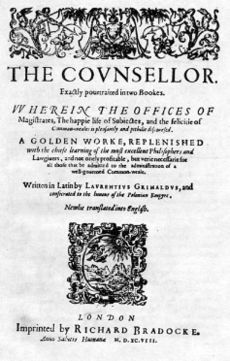
الفن والموسيقى
الشلختا والصرماتية
الديمغرافيا والدين

“لا شك أن صياغة وخلاصة إعلان كونفدرالية وارسة في 28 يناير 1573 كان استثناءً بالنظر إلى الظروف السائدة في باقي أنحاء اوروپا؛ والتي كانت تحتكم لمبادئ الحياة الدينية في الجمهورية لأكثر من مائتي عام.” - Norman Davies[32]
"أصبحت هذه البلد مأوى للزنادقة” - الكاردينال هوسيوس المندوب الپاپوي إلى پولندا.[33]
اللغات
- الپولندية - مُعترف بها رسمياً؛[36] يستخدمها في معظم إمارات الكومنولث،[36][37][38][39] والفلاحون في مقر الإمارة؛[40] اللغة الرسمية في استشارية ولاية العهد ومنذ عام 1697 في مستشارية الدوقية الكبرى.[41] لغة مستخدمة في البلدات.[40]
- اللاتينية - معترف بها رسمياً[36][42] يشيع استخدامها في العلاقات الخارجية[41] وشائعة كلغة ثانية في بعض الإمارات.[43]
- الفرنسية - غير معترف بها رسميا، حلت محل اللاتينية في وارسو في بداية القرن 18 كلغة تسخدم في العلاقات الخارجية وكلغة حقيقة مستخدمة.[44][45] كان يشيع استخدامها كلغة في العلوم والأدب وكلغات ثانية في بعض الإمارات.[46]
- Chancellery Ruthenian - وتعرف أيضاً باسم Chancellery Slavonic;[41] لغة رسمية معترف بها[36] لغة رسمية في استشارية الدوقية العظمى حتى عام 1697 (حينما حلت محلها الپولندية)؛ تستخدم في بعض العلاقات الخارجية[41][42][47] كانت لهجاتها تستخدم على نطاق واسع في الدوقية العظمى والمناطق الشرقية من الإمارة كلغة مستخدم.
- الليتوانية - غير معترف بها رسميا؛[36][48] لكنها تستخدم كلغة معترف بها في بعض الوثائق الرسمية[49][50][51] and, mostly, used as a spoken language in the northwest part of the Grand Duchy (in Lithuania Proper) and the northern part of Polish Prussia (see Lithuania Minor).[52]
- الجرمانية - off. recog.;[36] تستخدم في بعض العلاقات الخارجية، [41] في پروسيا الپولندية وبعض الأقليات في المدن.[40][53]
- العبرية - off. recog.;[36] يستخدمها اليهود في الشعائر الدينية.
- اليديشية، ويستخدمها اليهود في الحياة اليومية[40] لكن غير معترف بها كلغة رسمية.[54][55]
- الإيطالية - غير معترف بها رسمياً، تستخدم في بعض العلاقات الخارجية ويستخدمها الأقليات الإيطاليون في المدن.[56]
- الأرمنية - لغة معترف بها رسمياً[36] يستخدمها الأقلية الأرمن.[55][57]
- العربية - غير معترف بها رسمياً، تستخدم في بعض العلاقات الخارجية[58] ويستخدمها التتار في شعائرهم الدينية.[59]
الذكرى
تأسست دوقية وارسو عام 1907، وتعود بأصولها إلى الكومنولث. ظهرت حركات الإحياء الأخرى أثناء ثورة نوفمبر (1830–31)، ثورة يناير (1863–64) وفي العشرينيات، أثناء فشل يوزف پيوْسوتسكي في محاولة تأسيس Polish-led Międzymorze ("بين-البحار") فدرالية تشمل اوكرانيا. اليوم تعتبر جمهورية پولندا نفسها وريثة الكومنولث،[60] في الوقت الذي أعيد فيه تأسيس جمهورية لتوانيا في نهاية الحرب العالمية الأولى، فترى أن مشاركة دولة لتوانيا في الكومنولث الپولندي-اللتواني القديم على أنه جانب سلبي في المراحل الأولى من استقلالها،[61] بالرغم من تغير ذلك الانطباع فيما بعد.[62]
التقسيمات الادارية

الجغرافيا
معرض الصور
انظر أيضاً
- تاريخ الكومنولث الپولندي-اللتواني
- قوى تاريخية
- قائمة دروع پولندا
- List of szlachta
- شعارات النبالة الپولندية
- تاريخ الألمان في پولندا
- تاريخ اليهود في لتوانيا
- تاريخ اليهود في پولندا
ملاحظات
a. ^ Name in native and official languages:
- لاتينية: Regnum Poloniae Magnusque Ducatus Lithuaniae / Serenissima Res Publica Poloniae[28]
- فرنسية: Royaume de Pologne et Grand-duché de Lituanie / Sérénissime République de Pologne et Grand-duché de Lituanie[67]
- پولندية: Królestwo Polskie i Wielkie Księstwo Litewskie
- لتوانية: Lenkijos Karalystė ir Lietuvos Didžioji Kunigaikštystė
- بالبيلاروسية: Каралеўства Польскае і Вялікае Княства Літоўскае (Karaleўstva Pol'skae і Vjalіkae Knjastva Lіtoўskae)
- أوكرانية: Королівство Польське і Велике князівство Литовське
- ألمانية: Königreich Polen und Großfürstentum Litauen
b. ^ Historians date the change of the Polish capital from Kraków to Warsaw between 1595 and 1611, although Warsaw was not officially designated capital until 1793.[68] The Commonwealth Sejm began meeting in Warsaw soon after the Union of Lublin and its rulers generally maintained their courts there, although coronations continued to take place in Krakow.[68] The modern concept of a single capital city was to some extent inapplicable in the feudal and decentralized Commonwealth.[68] Warsaw is described by some historians as the capital of the entire Commonwealth.[69][70] Vilnius, the capital of the Grand Duchy,[71][72][73] is sometimes called the second capital of the entity.[74][75]
الهامش
- ^ Norman Davies, Europe: A History, Pimlico 1997, p. 554: Poland-Lithuania was another country which experienced its 'Golden Age' during the sixteenth and early seventeenth centuries. The realm of the last Jagiellons was absolutely the largest state in Europe
- ^ Piotr Stefan Wandycz (2001). The price of freedom: a history of East Central Europe from the Middle Ages to the present. Psychology Press. p. 66. ISBN 978-0-415-25491-5. Retrieved 13 August 2011.
- ^ Bertram Benedict (1919). A history of the great war. Bureau of national literature, inc. p. 21. Retrieved 13 August 2011.
- ^ خطأ استشهاد: وسم
<ref>غير صحيح؛ لا نص تم توفيره للمراجع المسماةPogonowski - ^ "Poland." Encyclopædia Britannica. 2009. Encyclopædia Britannica Online. Retrieved 20 Feb. 2009
- ^ Heritage: Interactive Atlas: Polish–Lithuanian Commonwealth. For population comparisons, see also those maps: [1], [2]
- ^ Yale Richmond, From Da to Yes: Understanding the East Europeans, Intercultural Press, 1995, p. 51
- ^ Maciej Janowski, Polish Liberal Thought, Central European University Press, 2001, ISBN 963-9241-18-0, Google Print: p3, p12
- ^ Paul W. Schroeder, The Transformation of European Politics 1763–1848, Oxford University Press, 1996, ISBN 0-19-820654-2, Google print p84
- ^ Rett R. Ludwikowski, Constitution-Making in the Region of Former Soviet Dominance, Duke University Press, 1997, ISBN 0-8223-1802-4, Google Print, p34
- ^ أ ب George Sanford, Democratic Government in Poland: Constitutional Politics Since 1989, Palgrave, 2002, ISBN 0-333-77475-2, Google print p11—constitutional monarchy, p3—anarchy
- ^ Aleksander Gella, Development of Class Structure in Eastern Europe: Poland and Her Southern Neighbors, SUNY Press, 1998, ISBN 0-88706-833-2, Google Print, p13
- ^ "Formally, Poland and Lithuania were to be distinct, equal components of the federation… But Poland, which retained possession of the Lithuanian lands it had seized, had greater representation in the Diet and became the dominant partner.""Lublin, Union of". Encyclopædia Britannica. 2006.[3]
- ^ # Norman Davies, God's Playground. A History of Poland, Vol. 1: The Origins to 1795, Vol. 2: 1795 to the Present. Oxford: Oxford University Press. ISBN 0-19-925339-0 / ISBN 0-19-925340-4
- ^ Halina Stephan, Living in Translation: Polish Writers in America, Rodopi, 2003, ISBN 90-420-1016-9, Google Print p373. Quoting from Sarmatian Review academic journal mission statement: Polish–Lithuanian Commonwealth was [...] characterized by religious tolerance unusual in premodern Europe
- ^ This quality of the Commonwealth was recognized by its contemporaries. Robert Burton, in his The Anatomy of Melancholy, first published in 1621, writes of Poland: "Poland is a receptacle of all religions, where Samosetans, Socinians, Photinians [...], Arians, Anabaptists are to be found"; "In Europe, Poland and Amsterdam are the common sanctuaries [for Jews]".
- ^ فليكس گروس، Citizenship and Ethnicity: The Growth and Development of a Democratic Multiethnic Institution, Greenwood Press, 1999, ISBN 0-313-30932-9, Google Print, p122 (notes)
- ^ "In the mid-1500s, united Poland was the largest state in Europe and perhaps the continent’s most powerful nation". "Poland". Encyclopædia Britannica. 2009. Encyclopædia Britannica Online. Retrieved 26 June 2009
- ^ (إنگليزية) Francis Dvornik (1992). The Slavs in European History and Civilization. Rutgers University Press. p. 300. ISBN 08-13507-99-5.
{{cite book}}: Cite has empty unknown parameters:|chapterurl=and|coauthors=(help) - ^ Martin Van Gelderen, Quentin Skinner, Republicanism: A Shared European Heritage, Cambridge University Press, 2002, ISBN 0-521-80756-5 Google Print: p54
- ^ The Causes of Slavery or Serfdom: A Hypothesis, discussion and full online text of Evsey Domar (1970) "The Causes of Slavery or Serfdom: A Hypothesis", Economic History Review 30:1 (March), pp18–32 خطأ استشهاد: وسم
<ref>غير صالح؛ الاسم "Domar" معرف أكثر من مرة بمحتويات مختلفة. خطأ استشهاد: وسم<ref>غير صالح؛ الاسم "Domar" معرف أكثر من مرة بمحتويات مختلفة. - ^ Poland’s 1997 Constitution in Its Historical Context; Daniel H. Cole, Indiana University School of Law, September 22, 1998 http://indylaw.indiana.edu/instructors/cole/web%20page/polconst.pdf
- ^ Blaustein, Albert (1993). Constitutions of the World. Fred B. Rothman & Company.
{{cite book}}: Unknown parameter|month=ignored (help) - ^ Isaac Kramnick, Introduction, Madison, James (1987). The Federalist Papers. Penguin Classics. ISBN 0-14-044495-5.
{{cite book}}: Unknown parameter|month=ignored (help) - ^ John Markoff describes the advent of modern codified national constitutions as one of the milestones of democracy, and states that "The first European country to follow the U.S. example was Poland in 1791." John Markoff, Waves of Democracy, 1996, ISBN 0-8039-9019-7, p.121.
- ^ Davies, Norman (1996). Europe: A History. Oxford University Press. p. 699. ISBN 0198201710.
- ^ أ ب Ex quo serenissima respublica Poloniae in corpore ad exempluin omnium aliarnm potentiarum, lilulum regiuin Borussiae recognoscere decrevit (...)
(بالفرنسية) Antoine-François-Claude Ferrand (1820). "Volume 1". Histoire des trois démembremens de la Pologne: pour faire suite à l'histoire de l'Anarchie de Pologne par Rulhière. Deterville. p. 182.{{cite book}}: Cite has empty unknown parameters:|chapterurl=and|coauthors=(help) - ^ Although the terms [Rzeczpospolita] Error: {{Lang}}: text has italic markup (help) (Commonwealth/Republic) and [Oba Narody] Error: {{Lang}}: text has italic markup (help) (Two/Both Nations) were widespread in the period, and were used in the combined form for the first time only in 1967 in Paweł Jasienica's book thus entitled.
- ^ (Polish) Kazimierz Maliszewski (1990). Obraz świata i Rzeczypospolitej w polskich gazetach rękopiśmiennych z okresu późnego baroku: studium z dziejów kształtowania się i rozpowszechniania sarmackich stereotypów wiedzy i informacji o "theatrum mundi". Schr. p. 79. ISBN 83-23102-39-2.
{{cite book}}: Cite has empty unknown parameters:|chapterurl=and|coauthors=(help) W każdym razie "królowa bez korony i pierwsza dama Rzeczypospolitej", jak współcześni określali Sieniawską, zasługuje na biografię naukową. - ^ (Polish) Warszawa, jej dzieje i kultura. Arkady. 1980. p. 667. ISBN 83-21329-58-6.
{{cite book}}: Cite has empty unknown parameter:|chapterurl=(help); Unknown parameter|coauthors=ignored (|author=suggested) (help) - ^ Norman Davies, God's Playground. A History of Poland, Vol. 1: The Origins to 1795, Vol. 2: 1795 to the Present. Oxford: Oxford University Press. ISBN 0-19-925339-0 / ISBN 0-19-925340-4
- ^ (إنگليزية) "Memory of the World Register Nomination Form". portal.unesco.org. Retrieved 2011-08-02.
- ^ (إنگليزية) "Lemberg". Catholic Encyclopedia. Retrieved 2010-09-03.
- ^ (إنگليزية) Peter Kardash, Brett Lockwood (1988). Ukraine and Ukrainians. Fortuna. p. 134.
{{cite book}}: Cite has empty unknown parameters:|chapterurl=and|coauthors=(help) - ^ أ ب ت ث ج ح خ د Anatol Lieven, The Baltic Revolution: Estonia, Latvia, Lithuania and the Path to Independence, Yale University Press, 1994, ISBN 0300060785, Google Print, p.48
- ^ Stephen Barbour, Cathie Carmichael, Language and Nationalism in Europe, Oxford University Press, 2000, ISBN 0199250855, Google Print p.184
- ^ Östen Dahl, Maria Koptjevskaja-Tamm, The Circum-Baltic Languages: Typology and Contact, John Benjamins Publishing Company, 2001, ISBN 9027230579, Google Print, p.45
- ^ Glanville Price, Encyclopedia of the Languages of Europe, Blackwell Publishing, 1998, ISBN 0631220399, Google Print, p.30
- ^ أ ب ت ث Mikulas Teich, The National Question in Europe in Historical Context, Cambridge University Press, 1993, ISBN 0521367131, Google Print, p.295
- ^ أ ب ت ث ج Kevin O'Connor, Culture And Customs of the Baltic States, Greenwood Press, 2006, ISBN 0313331251, Google Print, p.115
- ^ أ ب Daniel. Z Stone, A History of East Central Europe, p.46
- ^ Karin Friedrich et al., The Other Prussia: Royal Prussia, Poland and Liberty, 1569–1772, Cambridge University Press, 2000, ISBN 0521583357, Google Print, p.88
- ^ (إنگليزية) Tomasz Kamusella (2008). The Politics of Language and Nationalism in Modern Central Europe. Palgrave Macmillan. p. 115. ISBN 02-30550-70-3.
{{cite book}}: Cite has empty unknown parameters:|chapterurl=and|coauthors=(help) - ^ L'union personnelle polono-saxonne contribua davantage à faire connaître en Pologne le français que l'allemand. Cette fonction de la langue française, devenue l'instrument de communication entre les groupes dirigeants des deux pays. (بالفرنسية) Polish Academy of Sciences Institute of History (1970). "Volume 22". Acta Poloniae historica. National Ossoliński Institute. p. 79.
{{cite book}}: Cite has empty unknown parameters:|chapterurl=and|coauthors=(help) - ^ They were the first Catholic schools in which one of the main languages of instruction was Polish. [...] Although he followed Locke in attaching weight to the native language, in general Latin lost ground to French rather than Polish. (إنگليزية) Richard Butterwick (1998). Poland's last king and English culture: Stanisław August Poniatowski, 1732-1798. Oxford University Press. p. 70. ISBN 01-98207-01-8.
{{cite book}}: Cite has empty unknown parameters:|chapterurl=and|coauthors=(help) - ^ Piotr Eberhardt, Jan Owsinski, Ethnic Groups and Population Changes in Twentieth-century Central-Eastern Europe: History, Data, Analysis, M.E. Sharpe, 2003, ISBN 0765606658, Google Print, p.177
- ^ Östen Dahl, Maria Koptjevskaja-Tamm, The Circum-Baltic Languages: Typology and Contact, John Benjamins Publishing Company, 2001, ISBN 9027230579, Google Print, p.41
- ^ Zinkevičius, Z. (1993). Rytų Lietuva praeityje ir dabar. Vilnius: Mokslo ir enciklopedijų leidykla. p. 70. ISBN 5-420-01085-2.
Official usage of Lithuanian language in the 16th century Lithuania's cities proves magistrate's decree of Vilnius city, which was sealed by Žygimantas Augustas' in 1552...//Courts juratory were written in Lithuanian language. In fact, such [courts juratory written in Lithuanian] survived from the 17th century...
{{cite book}}: Cite has empty unknown parameter:|coauthors=(help) - ^ ""Mes Wladislaus..." a letter from Wladyslaw Vasa issued in 1639 written in Lithuanian language". Retrieved 2006-09-03.
- ^ Ališauskas, V. (2001). Lietuvos Didžiosios Kunigaikštijos kultūra. Tyrinėjimai ir vaizdai. Vilnius. p. 500. ISBN 9955-445-26-2.
In 1794 Government's declarations were carried out and in Lithuanian.
{{cite book}}: Unknown parameter|coauthors=ignored (|author=suggested) (help)CS1 maint: location missing publisher (link) - ^ Daniel. Z Stone, A History of East Central Europe, p.4
- ^ Czesław Miłosz, The History of Polish Literature, University of California Press, 1983, ISBN 0520044770, Google Print, p.108
- ^ Jan K. Ostrowski, Land of the Winged Horsemen: Art in Poland, 1572–1764, Yale University Press, 1999, ISBN 0300079184, Google Print, p.27
- ^ أ ب (إنگليزية) Joanna B. Michlic (2006). Poland's threatening other: the image of the Jew from 1880 to the present. U of Nebraska Press. p. 42. ISBN 08-03232-40-3.
{{cite book}}: Cite has empty unknown parameters:|chapterurl=and|coauthors=(help) خطأ استشهاد: وسم<ref>غير صالح؛ الاسم "autogenerated1" معرف أكثر من مرة بمحتويات مختلفة. خطأ استشهاد: وسم<ref>غير صالح؛ الاسم "autogenerated1" معرف أكثر من مرة بمحتويات مختلفة. - ^ (Polish) Karol Zierhoffer, Zofia Zierhoffer (2000). Nazwy zachodnioeuropejskie w języku polskim a związki Polski z kulturą Europy. Wydawnictwo Poznańskiego Towarzystwa Przyjaciół Nauk. p. 79. ISBN 83-70632-86-6.
{{cite book}}: Cite has empty unknown parameters:|chapterurl=and|coauthors=(help) Podobną opinię przekazał nieco późnej, w 1577 r. Marcin Kromer "Za naszej pamięci weszli [...] do głównych miast Polski kupcy i rzemieślnicy włoscy, a język ich jest także częściowo w użyciu, mianowicie wśród wytworniejszych Polaków, którzy chętnie podróżują do Włoch". - ^ (إنگليزية) Rosemary A. Chorzempa (1993). Polish roots. Genealogical Pub. ISBN 08-06313-78-1.
{{cite book}}: Cite has empty unknown parameters:|chapterurl=and|coauthors=(help) - ^ (إنگليزية) Jan K. Ostrowski, ed. (1999). Art in Poland, 1572-1764: land of the winged horsemen. Art Services International. p. 32. ISBN 08-83971-31-3.
{{cite book}}: Cite has empty unknown parameters:|chapterurl=and|coauthors=(help) In 1600 the son of the chancellor of Poland was learning four languages: Latin, Greek, Turkish, and Polish. By the time he had completed his studies, he was fluent not only in Turkish but also in Tatar and Arabic. - ^ (إنگليزية) Lola Romanucci-Ross, George A. De Vos, Takeyuki Tsuda (2006). Ethnic identity: problems and prospects for the twenty-first century. Rowman Altamira. p. 84. ISBN 07-59109-73-7.
{{cite book}}: Cite has empty unknown parameters:|chapterurl=and|coauthors=(help)CS1 maint: multiple names: authors list (link) - ^ A. stated, for instance by the preamble of the Constitution of the Republic of Poland of 1997.
- ^ Alfonsas Eidintas, Vytautas Zalys, Lithuania in European Politics: The Years of the First Republic, 1918–1940, Palgrave, 1999, ISBN 0-312-22458-3. Print, p78
- ^ ""Zobaczyć Kresy". Grzegorz Górny. Rzeczpospolita 23-08-2008 (in Polish)" (in (Polish)). Rp.pl. 2008-08-23. Retrieved 2009-02-01.
{{cite web}}: CS1 maint: unrecognized language (link) - ^ (إنگليزية) Gordon Campbell (2006). The Grove encyclopedia of decorative arts. Oxford University Press US. p. 13. ISBN 01-95189-48-5.
{{cite book}}: Cite has empty unknown parameters:|chapterurl=and|coauthors=(help) - ^ Gwei-Djen Lu, Joseph Needham, Vivienne Lo (2002). Celestial lancets: a history and rationale of acupuncture and moxa. Routledge. p. 284. ISBN 07-00714-58-8.
{{cite book}}: Cite has empty unknown parameters:|chapterurl=and|coauthors=(help)CS1 maint: multiple names: authors list (link) - ^ (إنگليزية) Ian Ridpath. "Taurus Poniatovii - Poniatowski's bull". www.ianridpath.com. Retrieved 2009-05-18.
- ^ After a fire had destroyed a wooden synagogue in 1733 Stanislaw Lubomirski decided to found a new bricked synagogue building. (إنگليزية) Polin Travel. "Lancut". www.jewish-guide.pl. Retrieved 2010-09-02.
- ^ (بالفرنسية) Guillaume de Lamberty (1735). "Volume 3". Mémoires pour servir à l'histoire du XVIIIe siècle, contenant les négociations, traitez, résolutions et autres documents authentiques concernant les affaires d'état: avec le supplément aux années MDCXCVI-MDCCIII. p. 343.
Généreux et Magnifiques Seigneurs les Sénateurs et autres Ordres de la Sérénissime République de Pologne et du grand Duché de Lithuanie
{{cite book}}: Cite has empty unknown parameters:|chapterurl=and|coauthors=(help) - ^ أ ب ت Francis W. Carter (1994). Trade and urban development in Poland: an economic geography of Cracow, from its origins to 1795 – Volume 20 of Cambridge studies in historical geography. Cambridge University Press. pp. 186, 187. ISBN 9780521412391.
- ^ Daniel Stone (2001). The Polish–Lithuanian state, 1386–1795. University of Washington Press. p. 221. ISBN 9780295980935.
- ^ Robert Bideleux, Ian Jeffries (1998). A history of eastern Europe: crisis and change. Routledge. p. 126. ISBN 9780415161114.
- ^ Norman Davies (1998). Europe: A History. HarperCollins. pp. 657–660. ISBN 9780060974688.
- ^ Politics and reformations: communities, polities, nations, and empires.2007 p.206
- ^ Zeitschrift für Ostmitteleuropa-Forschung.2006, Vol.55; p.2
- ^ Thomas A. Brady, Christopher Ocker; entry by David Frick (2007). Politics and reformations: communities, polities, nations, and empires : essays in honor of Thomas A. Brady, Jr. Brill Publishers. p. 206. ISBN 9789004161733.
{{cite book}}: CS1 maint: multiple names: authors list (link) - ^ Marcel Cornis-Pope, John Neubauer; essay by Tomas Venclova (2004). History of the literary cultures of East-Central Europe: junctures and disjunctures in the 19th and 20th centuries (Volume 2). John Benjamins Publishing Company. p. 11. ISBN 9789027234537.
{{cite book}}: CS1 maint: multiple names: authors list (link)
خطأ استشهاد: الوسم <ref> ذو الاسم "A history of Ukraine" المُعرّف في <references> غير مستخدم في النص السابق.
خطأ استشهاد: الوسم <ref> ذو الاسم "Baroque in Poland" المُعرّف في <references> غير مستخدم في النص السابق.
خطأ استشهاد: الوسم <ref> ذو الاسم "Dictionary of Quotations (Classical)" المُعرّف في <references> غير مستخدم في النص السابق.
خطأ استشهاد: الوسم <ref> ذو الاسم "Encyclopedia of witchcraft: the Western tradition" المُعرّف في <references> غير مستخدم في النص السابق.
خطأ استشهاد: الوسم <ref> ذو الاسم "European Jewish Congress – Poland" المُعرّف في <references> غير مستخدم في النص السابق.
خطأ استشهاد: الوسم <ref> ذو الاسم "Europeanisation, national identities, and migration: changes in boundary constructions between Western and Eastern Europe" المُعرّف في <references> غير مستخدم في النص السابق.
خطأ استشهاد: الوسم <ref> ذو الاسم "Ftazee" المُعرّف في <references> غير مستخدم في النص السابق.
خطأ استشهاد: الوسم <ref> ذو الاسم "Gieysztor88" المُعرّف في <references> غير مستخدم في النص السابق.
خطأ استشهاد: الوسم <ref> ذو الاسم "Lineages of the absolutist state" المُعرّف في <references> غير مستخدم في النص السابق.
خطأ استشهاد: الوسم <ref> ذو الاسم "Linear induction drives" المُعرّف في <references> غير مستخدم في النص السابق.
خطأ استشهاد: الوسم <ref> ذو الاسم "Migrants and citizens: demographic change in the European state system" المُعرّف في <references> غير مستخدم في النص السابق.
خطأ استشهاد: الوسم <ref> ذو الاسم "Pacy_and_Hughes_2001" المُعرّف في <references> غير مستخدم في النص السابق.
خطأ استشهاد: الوسم <ref> ذو الاسم "Palaces and Castles in a Lion Country" المُعرّف في <references> غير مستخدم في النص السابق.
خطأ استشهاد: الوسم <ref> ذو الاسم "Pollution and property: comparing ownership institutions for environmental protection" المُعرّف في <references> غير مستخدم في النص السابق.
خطأ استشهاد: الوسم <ref> ذو الاسم "Polska sztuka ludowa (Polish Folk Art)" المُعرّف في <references> غير مستخدم في النص السابق.
خطأ استشهاد: الوسم <ref> ذو الاسم "Rich noble, poor noble" المُعرّف في <references> غير مستخدم في النص السابق.
خطأ استشهاد: علامة <ref> بالاسم " Rich noble, poor noble " المحددة في مجموعة <references> " " لا تحتوي على محتوى.
خطأ استشهاد: الوسم <ref> ذو الاسم "Russia's foreign trade and economic expansion in the seventeenth century: windows on the world" المُعرّف في <references> غير مستخدم في النص السابق.
خطأ استشهاد: الوسم <ref> ذو الاسم "Rzeczpospolita spichlerzem Europy" المُعرّف في <references> غير مستخدم في النص السابق.
خطأ استشهاد: الوسم <ref> ذو الاسم "Setting Sail" المُعرّف في <references> غير مستخدم في النص السابق.
خطأ استشهاد: الوسم <ref> ذو الاسم "Tereskinas" المُعرّف في <references> غير مستخدم في النص السابق.
خطأ استشهاد: الوسم <ref> ذو الاسم "The Elective Monarchy" المُعرّف في <references> غير مستخدم في النص السابق.
خطأ استشهاد: الوسم <ref> ذو الاسم "The Essential World History: Volume II: Since 1500" المُعرّف في <references> غير مستخدم في النص السابق.
خطأ استشهاد: الوسم <ref> ذو الاسم "The Lithuanian-Rus'commonwealth, the Polish domination, and the Cossack-Hetman state" المُعرّف في <references> غير مستخدم في النص السابق.
خطأ استشهاد: الوسم <ref> ذو الاسم "The Rise and Decline of the Polish–Lithuanian Commonwealth due to Grain Trade" المُعرّف في <references> غير مستخدم في النص السابق.
خطأ استشهاد: الوسم <ref> ذو الاسم "The Rise and Decline of the Polish–Lithuanian Commonwealth due to Grain Trade3" المُعرّف في <references> غير مستخدم في النص السابق.
خطأ استشهاد: الوسم <ref> ذو الاسم "The headless state: aristocratic orders, kinship society, & misrepresentations of nomadic inner Asia" المُعرّف في <references> غير مستخدم في النص السابق.
خطأ استشهاد: علامة <ref> بالاسم " The headless state: aristocratic orders, kinship society, & misrepresentations of nomadic inner Asia " المحددة في مجموعة <references> " " لا تحتوي على محتوى.
خطأ استشهاد: الوسم <ref> ذو الاسم "The newly independent states of Eurasia: handbook of former Soviet republics" المُعرّف في <references> غير مستخدم في النص السابق.
خطأ استشهاد: الوسم <ref> ذو الاسم "The origins of the Slavic nations: premodern identities in Russia, Ukraine, and Belarus" المُعرّف في <references> غير مستخدم في النص السابق.
خطأ استشهاد: الوسم <ref> ذو الاسم "Ukraine" المُعرّف في <references> غير مستخدم في النص السابق.
خطأ استشهاد: الوسم <ref> ذو الاسم "Wandycz" المُعرّف في <references> غير مستخدم في النص السابق.
خطأ استشهاد: الوسم <ref> ذو الاسم "Welcome to Encyclopædia Britannica's Guide to History" المُعرّف في <references> غير مستخدم في النص السابق.
خطأ استشهاد: الوسم <ref> ذو الاسم "acta" المُعرّف في <references> غير مستخدم في النص السابق.
خطأ استشهاد: الوسم <ref> ذو الاسم "bidel" المُعرّف في <references> غير مستخدم في النص السابق.
<ref> ذو الاسم "yves" المُعرّف في <references> غير مستخدم في النص السابق.وصلات خارجية
- CS1 errors: unsupported parameter
- Lang and lang-xx template errors
- CS1 maint: location missing publisher
- Pages using gadget WikiMiniAtlas
- Articles containing لاتينية-language text
- Pages using Lang-xx templates
- Pages using infobox country with unknown parameters
- Pages using infobox country or infobox former country with the flag caption or type parameters
- Pages using infobox country or infobox former country with the symbol caption or type parameters
- Articles containing پولندية-language text
- Articles containing لتوانية-language text
- Articles with hatnote templates targeting a nonexistent page
- Portal-inline template with redlinked portals
- Pages with empty portal template
- Articles containing فرنسية-language text
- Articles containing بلاروسية-language text
- Articles containing أوكرانية-language text
- Articles containing ألمانية-language text
- Coordinates on Wikidata
- انحلالات 1795
- دول وأراضي تأسست في 1569
- القرن 16 في لتوانيا
- القرن 17 في لتوانيا
- القرن 18 في لتوانيا
- ممالك سابقة في اوروپا
- جمهوريات سابقة
- البلدان السلاڤية السابقة
- اتحادات دول سابقة
- تاريخ بلاروس (1569–1795)
- تاريخ لتوانيا (1569–1795)
- تاريخ پولندا (1569–1795)
- تاريخ اوكرانيا
- العلاقات الپولندية اللتوانية
- حكم الأقلية
- الكومنولث الپولندي-اللتواني
- محميات روسية سابقة


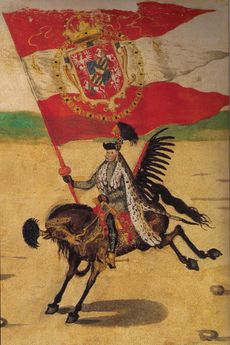

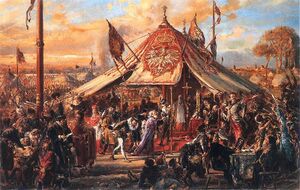
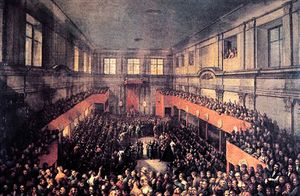

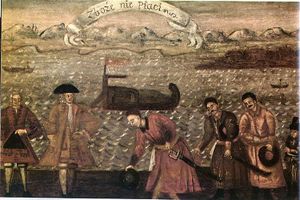




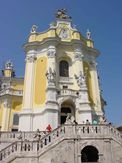




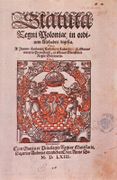
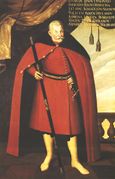
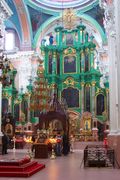
![4. 18th century amber casket. گدانسك patronized by the Polish court flourished as the center for amber working in the 17th century.[63]](/w/images/thumb/0/09/Malbork_%28DerHexer%29_2010-07-14_067.jpg/150px-Malbork_%28DerHexer%29_2010-07-14_067.jpg)
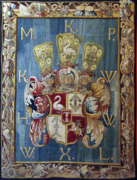

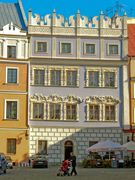
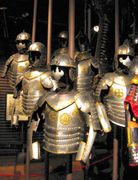


![11. A plate from Michał Boym's Flora Sinensis (1656), the first description of an ecosystem of the Far East published in Europe.[64]](/w/images/thumb/8/8b/Flora_Sinensis_-_Mango.JPG/128px-Flora_Sinensis_-_Mango.JPG)
![12. Taurus Poniatovii, constellation originated by Marcin Poczobutt in 1777 to honor the king Stanisław August.[65]](/w/images/thumb/7/7a/Taurus_Poniatovii.PNG/150px-Taurus_Poniatovii.PNG)
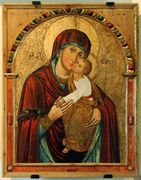
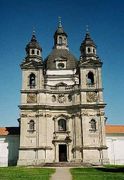
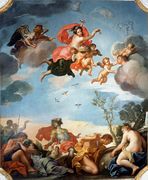
![16. Łańcut Synagogue was established by Stanisław Lubomirski, 1733.[66]](/w/images/thumb/9/9a/%C5%81a%C5%84cut_synagoga_06.jpg/120px-%C5%81a%C5%84cut_synagoga_06.jpg)